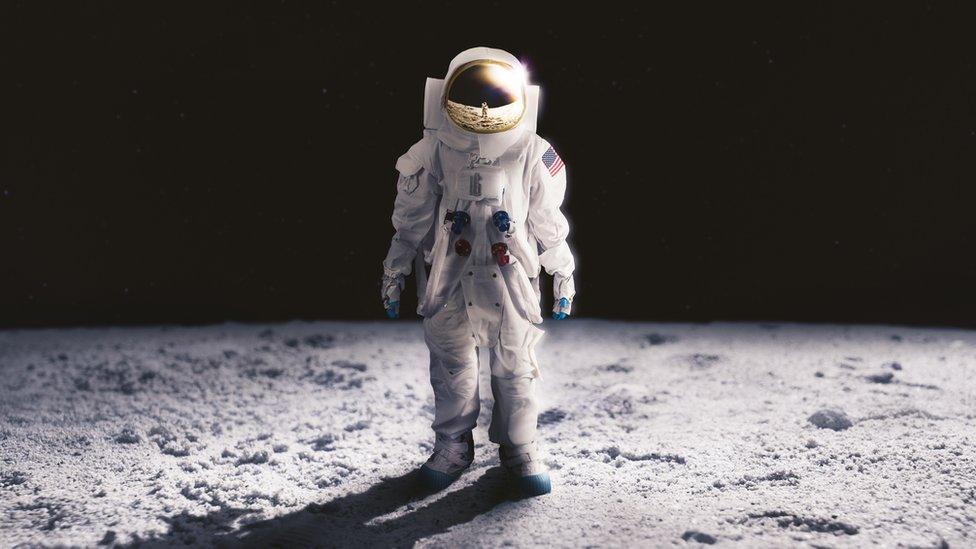Nasa wants to send astronauts to live on the Moon
- Published
- comments

The space race between the USA and Russia to land on the Moon was one of the biggest events of the 20th Century, with US astronaut Neil Armstrong making the famous landing in 1969.
But now Nasa wants to go a step further - by getting astronauts to stay there.
The space agency is hoping to make this "next giant leap in deep space exploration" within the next decade.
To be able to make this dream a reality they'll need to develop new technology with "reusable systems for astronauts to land on the Moon".
If it works maybe they could live in houses made out of these special space bricks, and grow their own food on the lunar surface.
Would you like to live on the Moon? Let us know why in the comments below.
In 2017 the European Space Agency shared these designs of how they imagine lunar homes of the future might look like
Back in December 2017, US President Donald Trump ordered Nasa to start planning a new mission to the Moon.
This mission would be Nasa's first return to the moon for the first time since 1972.
So what exactly is the plan?
Nasa's Jim Bridenstine is calling for American firms to help develop these human lunar landers which could help maintain "a sustainable, human presence beyond Earth's orbit".
Mr Bridenstine said industry partners who might be able to help develop lunar landers would be visiting Nasa's headquarters next week.
He said: "It starts with the Gateway - a lunar orbiting outpost designed to ensure the safe transit of astronauts to the lunar surface and back home again."
Mr Bridenstine added: "As a lifelong Nasa supporter, I am thrilled to be talking once again about landing humans on the moon. But to some, saying we're returning to the moon implies we'll be doing the same as we did 50 years ago.
"I want to be clear - that is not our vision. We are going to the moon with innovative new technologies and systems to explore more locations across the surface than we ever thought possible. This time, when we go to the moon, we will stay."
The moon isn't the only destination in Nasa's sights either.
Mr Bridenstine says Nasa's also planning to send astronauts "eventually to Mars and beyond," and that it was "an exciting time to be leading America's space programme".
- Published2 January 2019
- Published16 January 2019
- Published4 May 2017
